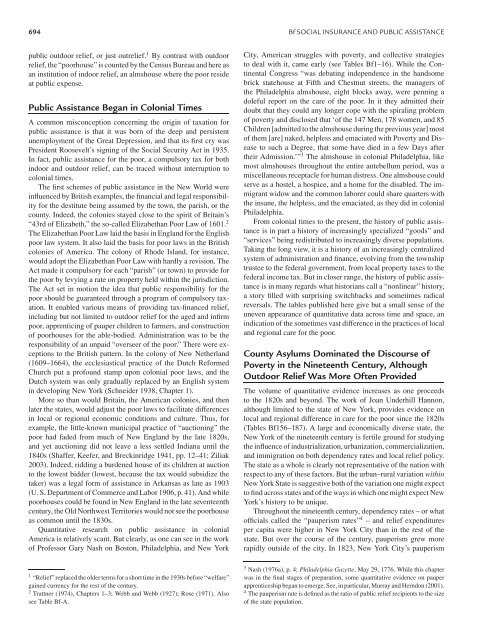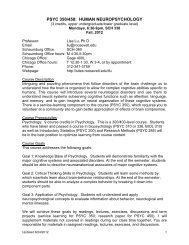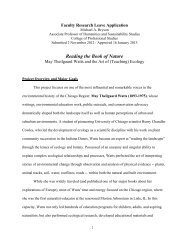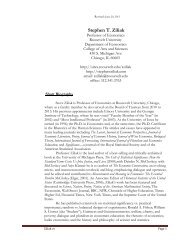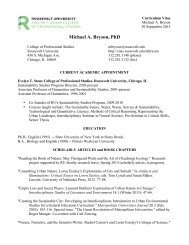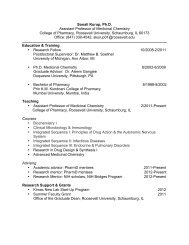Social Insurance and Public Assistance
public-assistance-welfare-reform-colonial-times-to-the-present-ziliak ...
public-assistance-welfare-reform-colonial-times-to-the-present-ziliak ...
You also want an ePaper? Increase the reach of your titles
YUMPU automatically turns print PDFs into web optimized ePapers that Google loves.
694 Bf SOCIAL INSURANCE AND PUBLIC ASSISTANCE<br />
public outdoor relief, or just outrelief. 1 By contrast with outdoor<br />
relief, the “poorhouse” is counted by the Census Bureau <strong>and</strong> here as<br />
an institution of indoor relief, an almshouse where the poor reside<br />
at public expense.<br />
<strong>Public</strong> <strong>Assistance</strong> Began in Colonial Times<br />
A common misconception concerning the origin of taxation for<br />
public assistance is that it was born of the deep <strong>and</strong> persistent<br />
unemployment of the Great Depression, <strong>and</strong> that its first cry was<br />
President Roosevelt’s signing of the <strong>Social</strong> Security Act in 1935.<br />
In fact, public assistance for the poor, a compulsory tax for both<br />
indoor <strong>and</strong> outdoor relief, can be traced without interruption to<br />
colonial times.<br />
The first schemes of public assistance in the New World were<br />
influenced by British examples, the financial <strong>and</strong> legal responsibility<br />
for the destitute being assumed by the town, the parish, or the<br />
county. Indeed, the colonies stayed close to the spirit of Britain’s<br />
“43rd of Elizabeth,” the so-called Elizabethan Poor Law of 1601. 2<br />
The Elizabethan Poor Law laid the basis in Engl<strong>and</strong> for the English<br />
poor law system. It also laid the basis for poor laws in the British<br />
colonies of America. The colony of Rhode Isl<strong>and</strong>, for instance,<br />
would adopt the Elizabethan Poor Law with hardly a revision. The<br />
Act made it compulsory for each “parish” (or town) to provide for<br />
the poor by levying a rate on property held within the jurisdiction.<br />
The Act set in motion the idea that public responsibility for the<br />
poor should be guaranteed through a program of compulsory taxation.<br />
It enabled various means of providing tax-financed relief,<br />
including but not limited to outdoor relief for the aged <strong>and</strong> infirm<br />
poor, apprenticing of pauper children to farmers, <strong>and</strong> construction<br />
of poorhouses for the able-bodied. Administration was to be the<br />
responsibility of an unpaid “overseer of the poor.” There were exceptions<br />
to the British pattern. In the colony of New Netherl<strong>and</strong><br />
(1609–1664), the ecclesiastical practice of the Dutch Reformed<br />
Church put a profound stamp upon colonial poor laws, <strong>and</strong> the<br />
Dutch system was only gradually replaced by an English system<br />
in developing New York (Schneider 1938, Chapter 1).<br />
More so than would Britain, the American colonies, <strong>and</strong> then<br />
later the states, would adjust the poor laws to facilitate differences<br />
in local or regional economic conditions <strong>and</strong> culture. Thus, for<br />
example, the little-known municipal practice of “auctioning” the<br />
poor had faded from much of New Engl<strong>and</strong> by the late 1820s,<br />
<strong>and</strong> yet auctioning did not leave a less settled Indiana until the<br />
1840s (Shaffer, Keefer, <strong>and</strong> Breckinridge 1941, pp. 12–41; Ziliak<br />
2003). Indeed, ridding a burdened house of its children at auction<br />
to the lowest bidder (lowest, because the tax would subsidize the<br />
taker) was a legal form of assistance in Arkansas as late as 1903<br />
(U. S. Department of Commerce <strong>and</strong> Labor 1906, p. 41). And while<br />
poorhouses could be found in New Engl<strong>and</strong> in the late seventeenth<br />
century, the Old Northwest Territories would not see the poorhouse<br />
as common until the 1830s.<br />
Quantitative research on public assistance in colonial<br />
America is relatively scant. But clearly, as one can see in the work<br />
of Professor Gary Nash on Boston, Philadelphia, <strong>and</strong> New York<br />
City, American struggles with poverty, <strong>and</strong> collective strategies<br />
to deal with it, came early (see Tables Bf1–16). While the Continental<br />
Congress “was debating independence in the h<strong>and</strong>some<br />
brick statehouse at Fifth <strong>and</strong> Chestnut streets, the managers of<br />
the Philadelphia almshouse, eight blocks away, were penning a<br />
doleful report on the care of the poor. In it they admitted their<br />
doubt that they could any longer cope with the spiraling problem<br />
of poverty <strong>and</strong> disclosed that ‘of the 147 Men, 178 women, <strong>and</strong> 85<br />
Children [admitted to the almshouse during the previous year] most<br />
of them [are] naked, helpless <strong>and</strong> emaciated with Poverty <strong>and</strong> Disease<br />
to such a Degree, that some have died in a few Days after<br />
their Admission.’” 3 The almshouse in colonial Philadelphia, like<br />
most almshouses throughout the entire antebellum period, was a<br />
miscellaneous receptacle for human distress. One almshouse could<br />
serve as a hostel, a hospice, <strong>and</strong> a home for the disabled. The immigrant<br />
widow <strong>and</strong> the common laborer could share quarters with<br />
the insane, the helpless, <strong>and</strong> the emaciated, as they did in colonial<br />
Philadelphia.<br />
From colonial times to the present, the history of public assistance<br />
is in part a history of increasingly specialized “goods” <strong>and</strong><br />
“services” being redistributed to increasingly diverse populations.<br />
Taking the long view, it is a history of an increasingly centralized<br />
system of administration <strong>and</strong> finance, evolving from the township<br />
trustee to the federal government, from local property taxes to the<br />
federal income tax. But in closer range, the history of public assistance<br />
is in many regards what historians call a “nonlinear” history,<br />
a story filled with surprising switchbacks <strong>and</strong> sometimes radical<br />
reversals. The tables published here give but a small sense of the<br />
uneven appearance of quantitative data across time <strong>and</strong> space, an<br />
indication of the sometimes vast difference in the practices of local<br />
<strong>and</strong> regional care for the poor.<br />
County Asylums Dominated the Discourse of<br />
Poverty inthe Nineteenth Century, Although<br />
Outdoor Relief Was More Often Provided<br />
The volume of quantitative evidence increases as one proceeds<br />
to the 1820s <strong>and</strong> beyond. The work of Joan Underhill Hannon,<br />
although limited to the state of New York, provides evidence on<br />
local <strong>and</strong> regional difference in care for the poor since the 1820s<br />
(Tables Bf156–187). A large <strong>and</strong> economically diverse state, the<br />
New York of the nineteenth century is fertile ground for studying<br />
the influence of industrialization, urbanization, commercialization,<br />
<strong>and</strong> immigration on both dependency rates <strong>and</strong> local relief policy.<br />
The state as a whole is clearly not representative of the nation with<br />
respect to any of these factors. But the urban–rural variation within<br />
New York State is suggestive both of the variation one might expect<br />
to find across states <strong>and</strong> of the ways in which one might expect New<br />
York’s history to be unique.<br />
Throughout the nineteenth century, dependency rates – or what<br />
officials called the “pauperism rates” 4 – <strong>and</strong> relief expenditures<br />
per capita were higher in New York City than in the rest of the<br />
state. But over the course of the century, pauperism grew more<br />
rapidly outside of the city. In 1823, New York City’s pauperism<br />
1 “Relief” replaced the older terms for a short time in the 1930s before “welfare”<br />
gained currency for the rest of the century.<br />
2 Trattner (1974), Chapters 1–3; Webb <strong>and</strong> Webb (1927); Rose (1971). Also<br />
see Table Bf-A.<br />
3 Nash (1976a), p. 4; Philadelphia Gazette, May 29, 1776. While this chapter<br />
was inthe final stages of preparation, some quantitative evidence on pauper<br />
apprenticeship began to emerge. See, in particular, Murray <strong>and</strong> Herndon (2001).<br />
4 The pauperism rate is defined as the ratio of public relief recipients to the size<br />
of the state population.


